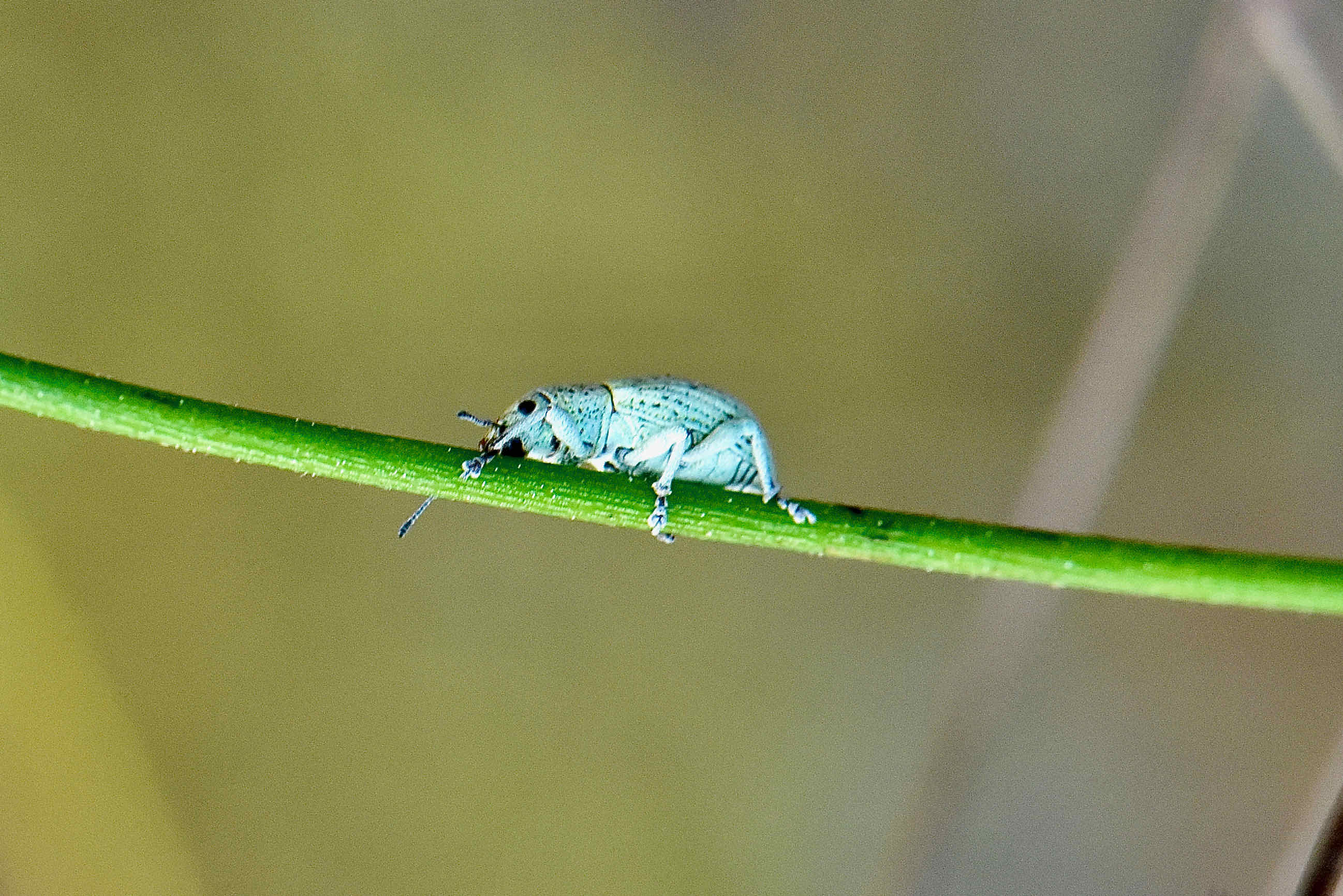
Blue green weevil, photographed at Lantana Scrub Natural Area, Lantana, Palm Beach County, in December 2021.
Say one thing about blue green weevils, aka Pachnaeus litus. They sure can reproduce.
As adults, they only live a maximum of 120 days, but in those 120 days, a female of the species can lay as many as 4,000 eggs. That’s a lot of eggs, and the way their larvae eat, potentially a lot of damaged plants.
But usually not. This weevil isn’t as evil as it might sound.
Blue green weevils are Florida natives found mostly in the southern half of the Sunshine State — Brevard County is about the northern limit of their range. They’re also found in the Caribbean. It does have a counterpart, Pachnaeus opalus, living in northern Florida. The ranges of the two overlap in Central Florida. Lucky Central Florida.
Blue green weevils can be found in a wide variety of habitats, hammocks, pinelands, mangroves, prairies and salt marshes.
They are, as their name suggests, blue-green in color, sometimes aqua, sometimes gray, small — a half-inch long at most — and have a series of length-wise grooves along their back (actually hardened forewings typical of many beetle species).
Females lay masses of 25 to 50 eggs each on the leaves of host plants — consider how often this must be done in order to lay 4,000 eggs within the limits of their short lifespan. The masses are placed between two leaves held together by a cement-like substance. The eggs hatch in seven to 10 days, the larvae drop to ground and burrow into the soil, where they’ll spend a few months munching on plant roots before going through a pupa stage and into young adulthood. All told, they’ll spend a year underground before emerging as fully formed weevils.
Mature adults will eat the leaves of a host plant — quite possibly the same plant whose roots they were eating earlier in their lives. Circular notches on the leaves indicate their presence. But it’s not so much the appetites of the adults as it is the larvae that do the most damage to plants. The hungry larvae can damage, even kill, roots as they eat into root tissue, but even if the root isn’t killed, the opening created leaves the plant vulnerable to fungus and disease.
Blue green weevils aren’t particularly picky eaters — there are 70 plant species they’ll attack — but their menu includes all citrus species. Which is why these bugs are also called the citrus root weevil, aka southern citrus root weevil.
Despite all this, they do have their enemies that help keep the population in check — there are several parasites that attack the eggs and bacteria that infect and kill the insects at any stage of their lives.
Agriculture experts consider the blue green weevil a minor citrus pest, doing little to damage a mature citrus tree, though a threat to the health of one already weakened by disease, citrus greening, for example.
There are several other native root weevils in Florida that similarly are considered minor citrus pests but there is one invader, the diaprepes root weevil, aka Diaprepes abbreviatus, that can devastate a citrus grove. The adults of the two species don’t look anything like each other, however, the diaprepes root weevil being primarily orange and black.
Blue green weevils are also known as blue green citrus root weevils or blue green citrus weevils. They are members of Curculionidae, the beetle family.
Lantana Scrub Natural Area
